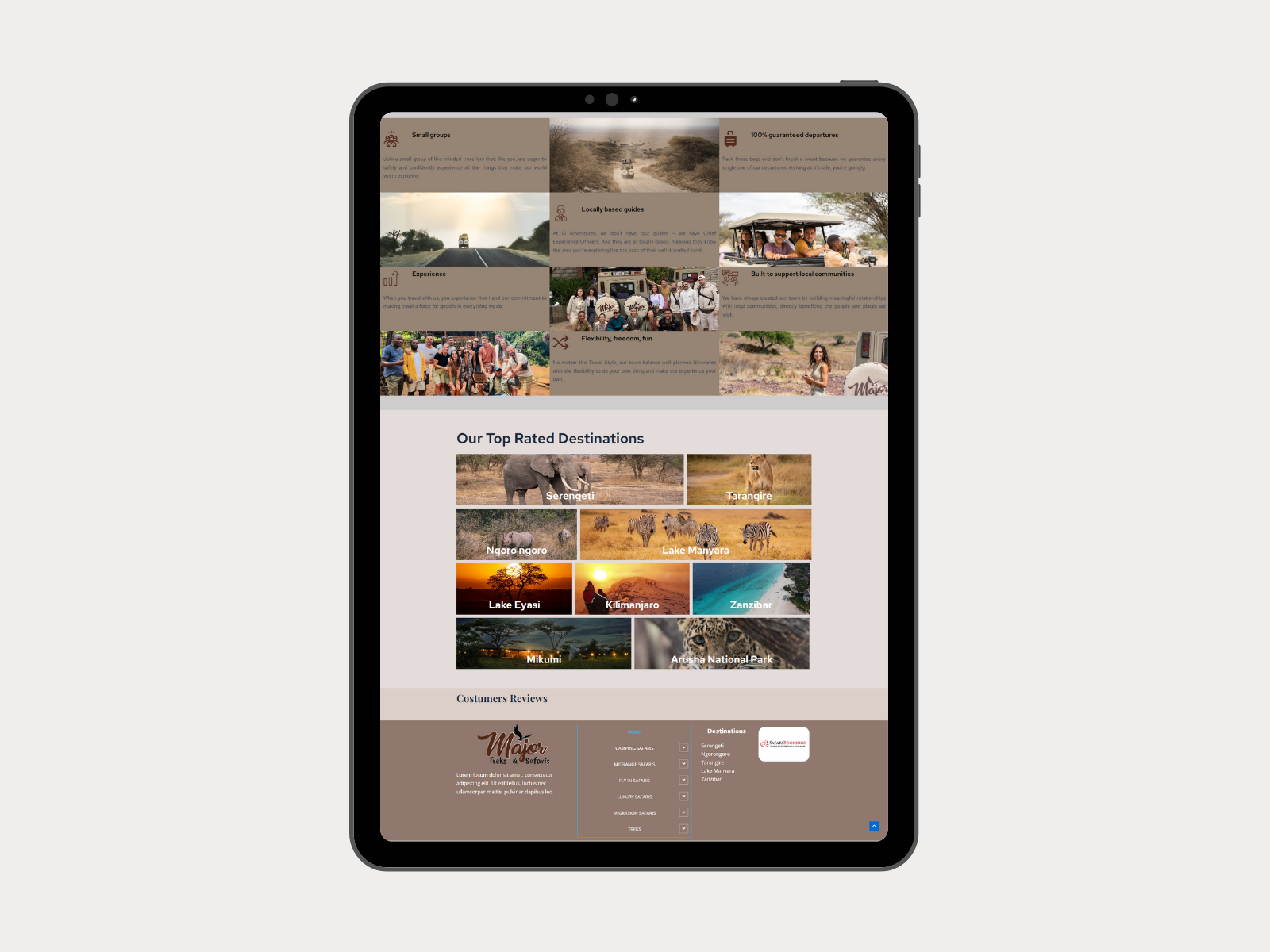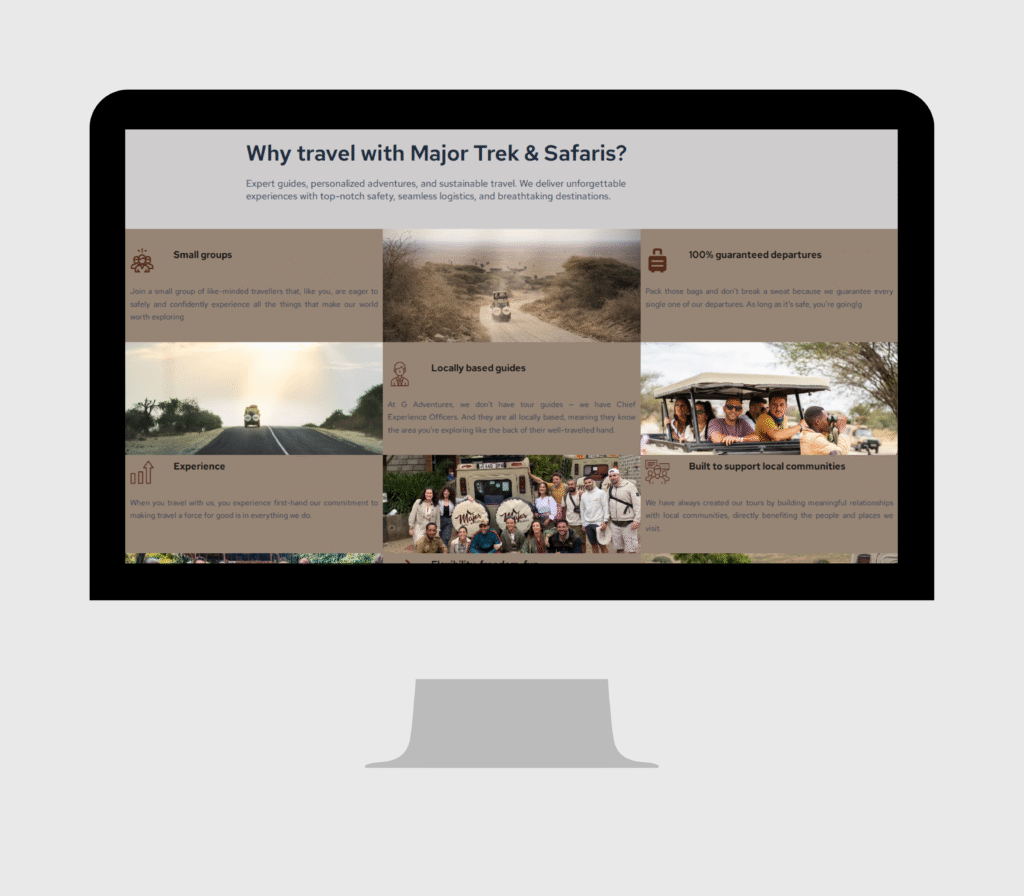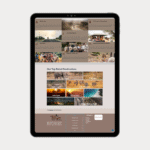The Ultimate Guide to Safari Website SEO
- Home
- The Ultimate Guide to Safari Website SEO

The Ultimate Guide to Safari Website SEO Optimization
Imagine you’ve just set up a beautiful safari website, filled with jaw-dropping photos of lions, elephants, and open plains. But there’s a problem—no one is visiting. You’ve built it, but they haven’t come. Why? Because even the most stunning safari experience can get lost in the online jungle without SEO optimization.
Let’s simplify the complex world of SEO, especially for safari websites. Whether you’re a tour operator, a travel blogger, or someone showcasing the beauty of Africa’s wild, this guide is for you.
Table of Contents
| Sr# | Headings |
|---|---|
| 1 | What Is Safari Website SEO Optimization? |
| 2 | Why Does SEO Matter for Safari Businesses? |
| 3 | Finding the Right Keywords |
| 4 | Creating Content That Roars |
| 5 | Image Optimization: More Than Just Pretty Pictures |
| 6 | Mobile-Friendliness Is a Must |
| 7 | Page Speed: Don’t Let Your Site Crawl |
| 8 | The Power of Backlinks |
| 9 | Google My Business & Local SEO |
| 10 | Structuring Your Website for Search Engines |
| 11 | Blogging: Your Secret Safari Weapon |
| 12 | Social Media Signals and SEO |
| 13 | Measuring Your SEO Success |
| 14 | Common SEO Mistakes to Avoid |
| 15 | Staying Ahead: SEO Trends for 2025 |
1. What Is Safari Website SEO Optimization?
SEO stands for Search Engine Optimization. It’s the process of making your website more visible on search engines like Google. Think of it like guiding a tourist on a safari—without clear paths (SEO), they won’t find the lions, and you won’t get bookings.
2. Why Does SEO Matter for Safari Businesses?
If you run a safari business, your competition isn’t just down the road—it’s global. Good SEO helps your site appear when someone searches for “best Serengeti safari” or “Masai Mara wildlife tours.” Without it, you’re invisible.
3. Finding the Right Keywords
Keywords are the compass for search engines. Use tools like Google Keyword Planner or Ubersuggest to find what people are searching for. Look for keywords like:
“Tanzania safari tours”
“affordable African safari”
“safari website SEO optimization”
Use them naturally in your content—don’t stuff them like an overpacked suitcase.
4. Creating Content That Roars
Quality content is your lion’s roar online. Tell stories. Share customer experiences, animal facts, or travel tips. Use headings, bullet points, and simple language to make your content easy to read and engaging.
Example: Instead of saying, “We offer wildlife excursions,” say, “Join us for a close-up with elephants in the Ngorongoro Crater!”
5. Image Optimization: More Than Just Pretty Pictures
Safari websites thrive on visuals. But large, unoptimized images can slow your site down.
Use JPEG for photos and PNG for graphics
Compress images using tools like TinyPNG
Add ALT text describing each image. This helps search engines and visually impaired users.
6. Mobile-Friendliness Is a Must
More than 60% of travelers search on mobile. If your site isn’t mobile-friendly, Google will push you down the ranks.
Test your site using Google’s Mobile-Friendly Test Tool. Choose a responsive design that adjusts to phones and tablets.

7. Page Speed: Don’t Let Your Site Crawl
Think of a slow site like a sluggish cheetah—not very impressive, right?
Use caching plugins (like WP Rocket)
Minimize code (HTML, CSS, JavaScript)
Choose a fast hosting provider
Fast sites keep visitors happy—and Google too.
8. The Power of Backlinks
Backlinks are links from other websites to yours. They’re like recommendations in the digital world.
Try this:
Guest post on travel blogs
Get listed on safari directories
Ask happy clients to blog about their experience and link back
9. Google My Business & Local SEO
If someone searches “safari tour near Arusha,” will they find you?
Create and verify your Google My Business listing. Add:
Accurate business info
Safari photos
Positive customer reviews
This boosts your visibility in Google Maps and local searches.
10. Structuring Your Website for Search Engines
Search engines read your website like a book. Make sure the chapters are clear.
Use H1, H2, and H3 tags properly
Keep URLs short and relevant (e.g.,
/safari-tours-serengeti)Add a sitemap and submit it via Google Search Console

11. Blogging: Your Secret Safari Weapon
A blog is like a campfire where stories are told.
Post regularly about:
Seasonal migration tips
Packing lists
Top safari animals
Each post is a new way to get found on Google. Include internal links to your tours or contact page.
12. Social Media Signals and SEO
While social shares don’t directly affect rankings, they drive traffic—which does help SEO.
Share your blogs, client photos, and behind-the-scenes moments on:
Facebook
Instagram
Pinterest
Add a link to your site in every post.
13. Measuring Your SEO Success
You can’t improve what you don’t track. Use Google Analytics and Search Console to check:
Traffic sources
Bounce rate
Keyword rankings
Adjust your strategy based on the data.
14. Common SEO Mistakes to Avoid
Avoid these traps:
Keyword stuffing
Duplicate content
Ignoring mobile users
Not using ALT text
Slow-loading pages
Even one mistake can lower your rankings.
15. Staying Ahead: SEO Trends for 2025
The digital world evolves fast. Here’s what to watch:
Voice search: Optimize for questions like “Where can I see the Big Five in Tanzania?”
AI-generated content: Use wisely, but always add a human touch.
E-A-T: Show Expertise, Authoritativeness, and Trustworthiness in your content.
Conclusion: Let Your Safari Website Stand Out
Safari website SEO optimization isn’t just about rankings—it’s about helping travelers discover your story, your tours, and the once-in-a-lifetime experiences you offer. By applying these tips with patience and consistency, you’ll make sure your digital footprint leads to your doorstep.
So go ahead—roar online, not just in the wild.
FAQs
1. How long does it take for safari website SEO optimization to show results?
It typically takes 3–6 months to see noticeable improvements, depending on your competition and efforts.
2. Can I do SEO for my safari website myself?
Yes! With the right tools and learning, anyone can start optimizing their site. But you can also hire experts if you prefer.
3. How often should I update my safari blog for better SEO?
Aim for at least one blog post per month. Consistency is key, even more than frequency.
4. Are paid ads better than SEO for safari businesses?
Paid ads bring quick results, but SEO builds long-term, organic traffic. A mix of both works best.
5. What’s the best tool to track my safari website SEO performance?
Google Analytics and Google Search Console are free and powerful tools to start with.
Recent Comments
Archives
Categories
Related Posts


The Ultimate Guide to Safari Website SEO






1 comment
There is something more genuine about a live presenter answering real questions in the course of a presentation. Also, through their multimedia capabilities, webinars provide a richer, more memorable experience for the audience. And finally, webinars create opportunities for marketers to gauge audience reaction.